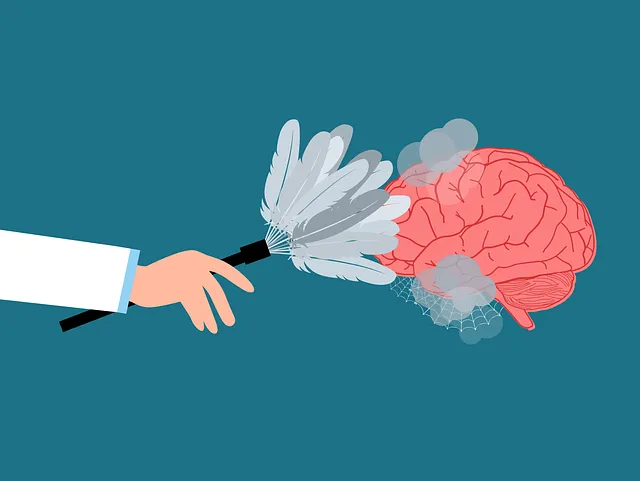Burnout among healthcare providers, particularly therapists at Kaiser Northglenn, is a growing concern impacting patient care. To combat this, Kaiser should implement strategies like open communication, social skills training, and self-awareness exercises to create a healthier work environment. Evaluating therapist quality through regular risk assessments, stress reduction methods, and proactive dialogue fosters well-being, prevents burnout, and improves patient care, ensuring Kaiser Northglenn continues its reputation for having good therapists.
Healthcare provider burnout is a growing concern, impacting patient care and well-being. This article explores strategies to prevent burnout among healthcare professionals in clinical settings, focusing on Northglenn as a case study. We delve into the factors contributing to burnout, specifically within Kaiser, and present actionable solutions. By understanding the challenges, we can enhance therapist quality and create healthier work environments, ensuring patients receive consistent care from motivated providers. Discover effective practices for navigating this complex issue.
- Understanding Burnout Among Healthcare Providers
- Strategies for Preventing Burnout in Clinical Settings
- Evaluating and Enhancing Therapist Quality in Northglenn
Understanding Burnout Among Healthcare Providers

Burnout among healthcare providers is a growing concern that significantly impacts patient care and overall well-being. It refers to a state of emotional exhaustion, depersonalization, and reduced personal accomplishment, often stemming from prolonged exposure to stressful work environments. This issue is prevalent in various healthcare settings, affecting not just physicians but also nurses, therapists, and other medical professionals. For instance, those seeking Does Kaiser have good therapists Northglenn might find a supportive network, but understanding burnout remains crucial for effective long-term care.
The causes of burnout are multifaceted, including heavy workloads, long working hours, lack of control over work processes, insufficient rewards, and poor communication within teams. To combat this, healthcare organizations should implement proactive strategies that foster a healthy work environment. This can involve Communication Strategies that encourage open dialogue between staff and management, Social Skills Training to enhance interpersonal connections and reduce conflicts, and Self-Awareness Exercises that promote personal growth and resilience in the face of stress.
Strategies for Preventing Burnout in Clinical Settings

Preventing burnout among healthcare providers is a critical aspect of maintaining high-quality patient care, especially in busy clinical settings like those at Kaiser Northglenn. Effective strategies focus on creating a supportive environment and empowering practitioners to prioritize their well-being. One key approach involves implementing robust communication strategies, ensuring open lines of communication between staff, patients, and families. This fosters a sense of collaboration and reduces the emotional burden often associated with healthcare delivery.
Additionally, integrating mental wellness into the workplace culture through initiatives like the Mental Wellness Podcast Series Production can be beneficial. Encouraging positive thinking and providing resources for stress management and resilience-building can help providers cope with challenging situations. By adopting these proactive measures, Kaiser Northglenn can promote a healthier, happier, and more productive work environment for its therapists and other healthcare professionals.
Evaluating and Enhancing Therapist Quality in Northglenn

In Northglenn, evaluating and enhancing therapist quality is a key strategy in preventing healthcare provider burnout among mental health professionals. Kaiser’s reputation for having good therapists in this area offers a promising starting point for mental health practitioners seeking support and development opportunities. Regular risk assessments, such as the ones conducted under the Mental Health Professional Stress Reduction program, play a crucial role in identifying early signs of burnout and providing targeted interventions. These assessments, coupled with stress reduction methods and self-awareness exercises, can significantly mitigate risks associated with the profession.
By fostering an environment that encourages open dialogue about mental health challenges and promotes effective coping strategies, healthcare providers in Northglenn can enhance their overall well-being. This proactive approach not only prevents burnout but also improves patient care by ensuring therapists are equipped to handle their own emotional needs while supporting others. Such initiatives contribute to the creation of a resilient and sustainable healthcare ecosystem.
Burnout among healthcare providers is a pressing issue, but with the right strategies, it can be mitigated. By understanding the unique challenges faced by these professionals, we can implement effective solutions like those discussed in this article. Evaluating and enhancing therapist quality, as seen in Northglenn, demonstrates the potential for improved patient care. Organizations like Kaiser should prioritize these measures to ensure their therapists remain engaged, motivated, and of high caliber, thereby fostering better outcomes for patients. In terms of evaluating therapist quality, considering factors beyond mere client satisfaction can reveal deeper insights, leading to more robust prevention strategies.






